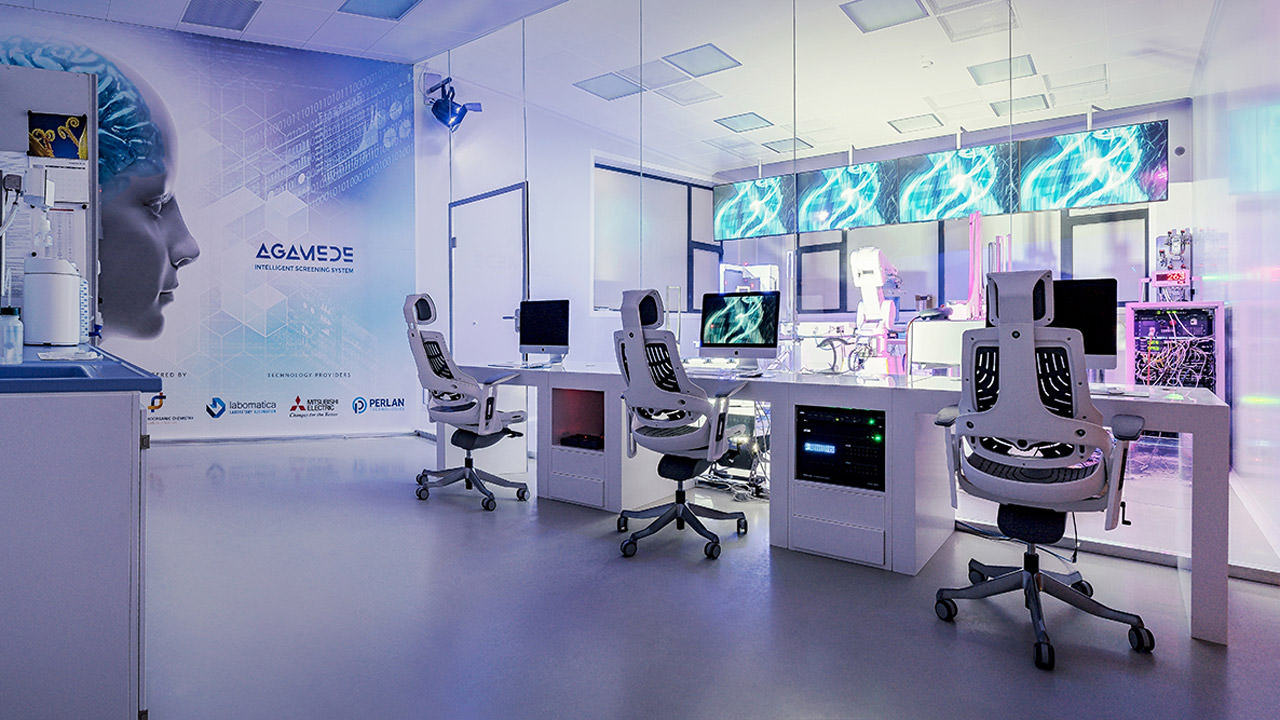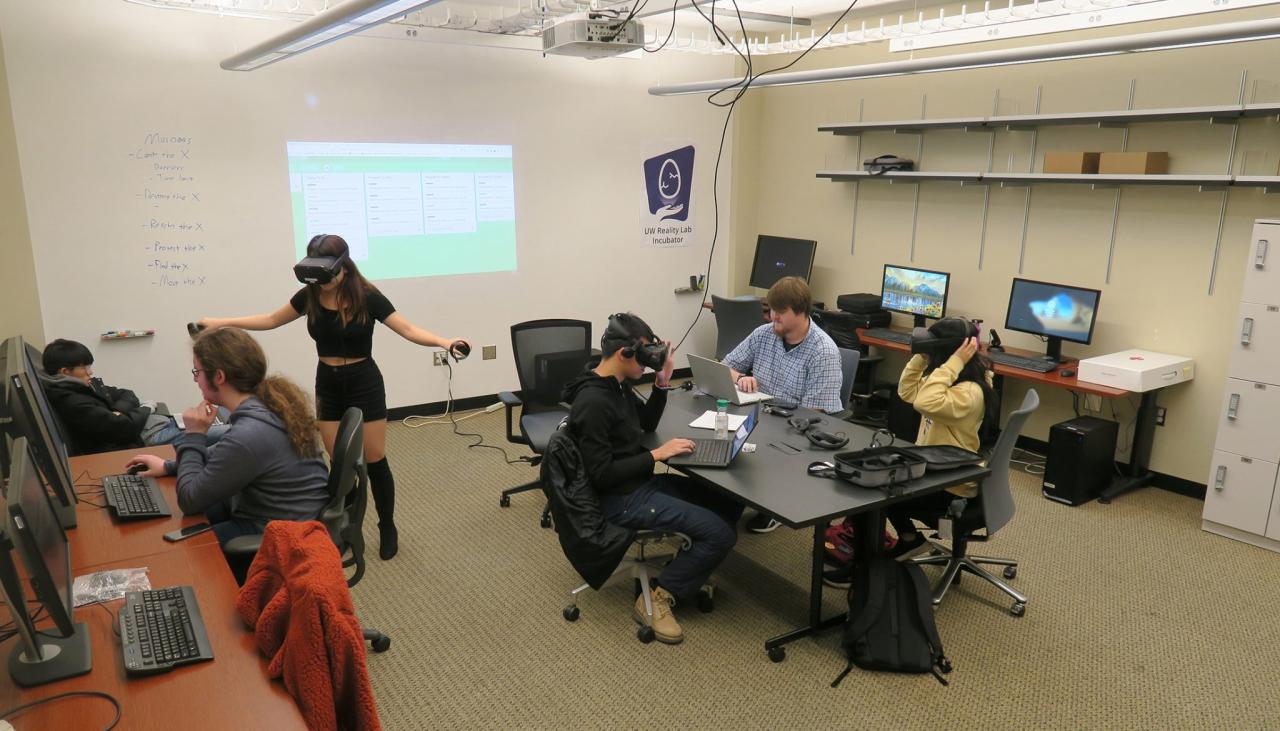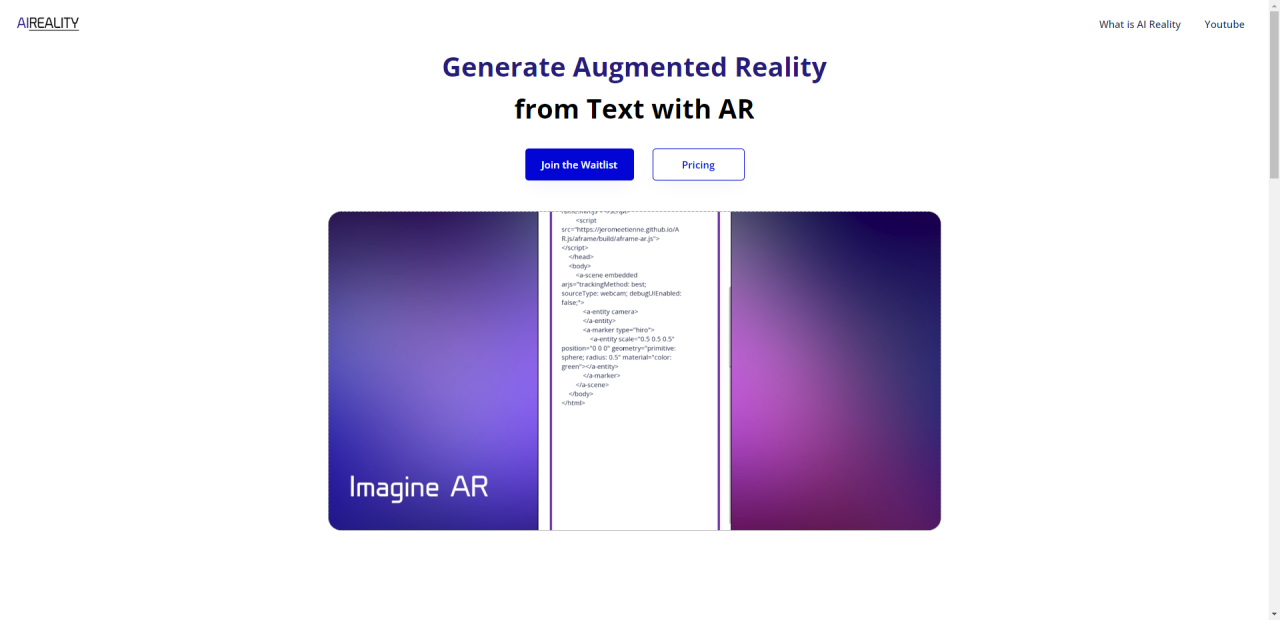Reality AI Lab sets the stage for a fascinating exploration of how artificial intelligence is reshaping our perception of reality. We’ll delve into the cutting-edge technologies, potential applications, and ethical considerations of this rapidly evolving field. Think immersive simulations for medical training, AI-powered educational tools that personalize learning, and revolutionary industrial design processes – all powered by the innovative work happening within the Reality AI Lab.
Reality AI Lab is pushing the boundaries of AI, exploring cutting-edge applications. If you’re wondering about the accessibility of other large language models, check if chatgpt down? before diving into your next project. Knowing the status of popular AI tools helps you plan your experiments within Reality AI Lab more effectively.
This journey will cover the lab’s core mission, its research areas, and the potential societal impact of its breakthroughs. We’ll examine the key technologies driving its innovations, from virtual and augmented reality to sophisticated AI algorithms. Finally, we’ll consider the ethical implications and future directions of this transformative research.
Reality AI Lab’s cutting-edge simulations require a strong, stable internet connection. Before diving into our latest project, make sure your iPhone’s WiFi is performing optimally; check which GHz band you’re connected to by following these simple steps: how to check your wifi ghz on iphone. A 5 GHz connection is generally faster, ideal for seamless interaction with Reality AI Lab’s powerful tools.
Introduction to Reality AI Lab
The Reality AI Lab is a hypothetical research facility dedicated to pushing the boundaries of human-computer interaction through the innovative integration of artificial intelligence (AI) and immersive technologies like virtual reality (VR) and augmented reality (AR). Its core mission is to develop and deploy AI-powered solutions that enhance human capabilities and address pressing societal challenges across various sectors.
Core Mission and Goals

The Reality AI Lab aims to bridge the gap between the digital and physical worlds by creating seamless and intuitive interfaces between humans and complex data sets. Key goals include advancing the development of AI algorithms for real-time data processing in immersive environments, creating user-friendly interfaces for complex data visualization, and developing applications that benefit society as a whole.
Potential Areas of Research and Development
Research within the Reality AI Lab encompasses a broad spectrum of areas, including AI-driven simulations for training and education, advanced VR/AR interfaces for healthcare applications, and the development of novel AI algorithms for real-time data analysis in industrial settings. The lab also explores ethical implications and societal impacts of its research, ensuring responsible innovation.
Potential Societal Impact
Advancements from the Reality AI Lab have the potential to revolutionize various industries and improve quality of life. For instance, improved medical training simulations could lead to better healthcare outcomes, while advanced industrial design tools could boost productivity and efficiency. Enhanced educational tools could make learning more engaging and accessible, while new forms of human-computer interaction could improve accessibility for people with disabilities.
Reality AI Lab’s cutting-edge research often relies on strong network connections. For optimal performance, you’ll want to ensure you’re using the right frequency band; check which GHz your iPhone is connected to by following these instructions: how to check your wifi ghz on iphone. Knowing this helps optimize your connection for the best experience with Reality AI Lab’s applications and data transfers.
Technologies Employed by Reality AI Lab
The Reality AI Lab leverages a suite of cutting-edge technologies to achieve its research goals. The following table highlights five key technologies and their roles within the lab.
| Technology Name | Description | Application | Potential Challenges |
|---|---|---|---|
| Virtual Reality (VR) | Immersive, computer-generated environments that simulate real-world experiences. | Training simulations, therapeutic interventions, design visualization. | Motion sickness, high cost of equipment, development complexity. |
| Augmented Reality (AR) | Overlaying digital information onto the real world through devices like smartphones or headsets. | Interactive instruction manuals, real-time data visualization, remote collaboration. | Limited field of view, technical limitations with object recognition, battery life. |
| Artificial Intelligence (AI) | Algorithms enabling computers to learn from data and make decisions. | Data analysis, predictive modeling, automated task execution. | Data bias, algorithm explainability, ethical concerns. |
| Machine Learning (ML) | A subset of AI focused on enabling systems to learn from data without explicit programming. | Pattern recognition, predictive analytics, personalized learning experiences. | Data dependency, computational cost, potential for overfitting. |
| High-Performance Computing (HPC) | Systems designed to handle complex computations efficiently. | Processing large datasets, running complex simulations, training AI models. | High cost, power consumption, specialized expertise required. |
Integration of VR and AR Technologies

VR and AR are integrated to create immersive and interactive experiences for users. For example, VR is used to build realistic simulations for training, while AR overlays real-time data onto the user’s view of the physical world, allowing for interactive manipulation and analysis of complex systems. This combination allows for a more engaging and effective learning and problem-solving experience.
Role of Artificial Intelligence in Data Processing
AI plays a crucial role in processing and interpreting the massive amounts of data generated by VR and AR applications. Machine learning algorithms analyze user interactions, environmental data, and simulation results to identify patterns, make predictions, and personalize the user experience. AI also automates data analysis tasks, freeing up researchers to focus on higher-level interpretation and insights.
Applications of Reality AI Lab Research
Healthcare Applications
The Reality AI Lab’s research is transforming healthcare through several key applications. Three examples are detailed below:
- Surgical Simulation and Training: VR simulations provide surgeons with realistic training environments to practice complex procedures, reducing risk and improving surgical skills.
- Rehabilitation Therapy: AR-based games and exercises engage patients in interactive rehabilitation programs, improving motivation and adherence to therapy plans.
- Remote Patient Monitoring: Wearable sensors and AI-powered analysis provide real-time health data, allowing healthcare professionals to remotely monitor patients and intervene proactively.
Revolutionizing Education
Imagine a history lesson where students explore ancient Rome in a fully immersive VR environment, or a biology class where they dissect a virtual frog without harming a real one. Reality AI Lab technology can transform education by making learning more engaging, interactive, and accessible. AI-powered personalized learning platforms can adapt to individual student needs, optimizing the learning experience.
Enhancing Industrial Design and Manufacturing
The lab’s technology can streamline industrial design and manufacturing processes. For instance, designers can use VR to visualize and manipulate 3D models of products before physical prototypes are created, reducing costs and development time. AR can guide workers through complex assembly processes, minimizing errors and improving efficiency.
Ethical Considerations of Reality AI Lab
Potential Ethical Dilemmas
The development and deployment of Reality AI Lab technologies present several ethical challenges. These include concerns about data privacy, algorithmic bias, the potential for misuse of immersive technologies, and the need for transparency and accountability in the development and use of AI systems.
Addressing Data Bias
Datasets used to train AI models can reflect existing societal biases, leading to unfair or discriminatory outcomes. Mitigation strategies include carefully curating datasets to ensure diversity and representation, developing algorithms that are less susceptible to bias, and implementing rigorous testing and validation procedures.
Benefits and Risks of Widespread Adoption

Widespread adoption of Reality AI Lab technologies offers numerous benefits, including improved healthcare, education, and industrial efficiency. However, potential risks include job displacement due to automation, increased social isolation due to overuse of immersive technologies, and the potential for misuse of AI-powered systems. Careful consideration and responsible development are crucial to maximize benefits while mitigating risks.
Future Directions for Reality AI Lab
Major Breakthroughs in the Next Decade
Within the next decade, the Reality AI Lab could achieve several significant breakthroughs. These include:
- Hyperrealistic Immersive Environments: Development of VR and AR systems that are indistinguishable from reality, creating truly immersive experiences for training, therapy, and entertainment.
- Brain-Computer Interfaces: Seamless integration of human brains with AI systems, allowing for direct control of virtual and augmented environments through thought.
- AI-Driven Personalized Medicine: Development of AI systems capable of diagnosing and treating diseases with unprecedented accuracy and personalization, leveraging massive datasets and advanced algorithms.
Ensuring Responsible Innovation
The Reality AI Lab will prioritize responsible innovation by actively engaging with ethicists, policymakers, and the public to ensure that its technologies are developed and deployed ethically and responsibly. This includes establishing clear guidelines for data privacy, algorithmic transparency, and user safety.
Collaboration and Partnerships
The lab will foster strong collaborations with other research institutions, universities, and industries to maximize its impact. Partnerships will facilitate knowledge sharing, resource pooling, and the rapid translation of research findings into practical applications.
Visual Representation of Reality AI Lab Research

Image Description: AI-Powered Surgical Simulation, Reality ai lab
The image depicts a surgeon wearing a VR headset, performing a complex surgical procedure on a virtual patient. The virtual environment is highly realistic, with detailed anatomical models and realistic surgical instruments. The surgeon’s movements are tracked precisely, providing real-time feedback on their technique. A holographic display projects key metrics, such as heart rate and blood pressure, directly into the surgeon’s field of view.
The visual elements symbolize the precision, accuracy, and safety enabled by AI-powered surgical simulations.
Infographic: Workflow of a Major Project
The infographic illustrates the workflow of a major project focused on developing an AI-powered diagnostic tool for early cancer detection. Key data points and processes are:
- Data Acquisition: Gathering medical images (MRI, CT scans) from diverse patient populations.
- Data Preprocessing: Cleaning and preparing the data for AI model training.
- Model Training: Using machine learning algorithms to train an AI model to identify cancerous cells.
- Model Validation: Testing the model’s accuracy and reliability on unseen data.
- Deployment: Integrating the model into a clinical workflow for real-world use.
- Monitoring and Improvement: Continuously monitoring the model’s performance and making improvements based on real-world data.
3D Model Description: AI-Powered Prosthetic Limb
The 3D model represents an advanced prosthetic limb controlled by AI. The limb is lightweight and highly responsive, with sensors that detect muscle signals and translate them into precise movements. AI algorithms process the sensor data, allowing the prosthetic to adapt to the user’s individual needs and environment. The model’s features include a seamless integration with the user’s body, intuitive control, and advanced sensory feedback.
Final Thoughts
The Reality AI Lab represents a pivotal moment in technological advancement, promising to revolutionize numerous sectors. By thoughtfully addressing ethical concerns and fostering collaboration, the lab’s research can unlock immense potential while mitigating risks. The future applications are vast and exciting, paving the way for a more immersive, efficient, and insightful world. The key takeaway? Reality AI Lab is not just about creating new technologies; it’s about shaping a better future responsibly.
FAQ Corner
What kind of data does Reality AI Lab use?
The lab likely uses a variety of data, including sensor data, user interaction data, and simulations, depending on the specific project.
How does the lab ensure data privacy?
Robust data anonymization and security protocols are essential. Specific methods would depend on the nature of the data and applicable regulations.
Who funds the Reality AI Lab?
Funding could come from various sources, including government grants, private investment, and corporate partnerships.
What are the career opportunities at Reality AI Lab?
Opportunities likely exist for researchers, software engineers, data scientists, and specialists in VR/AR development.
